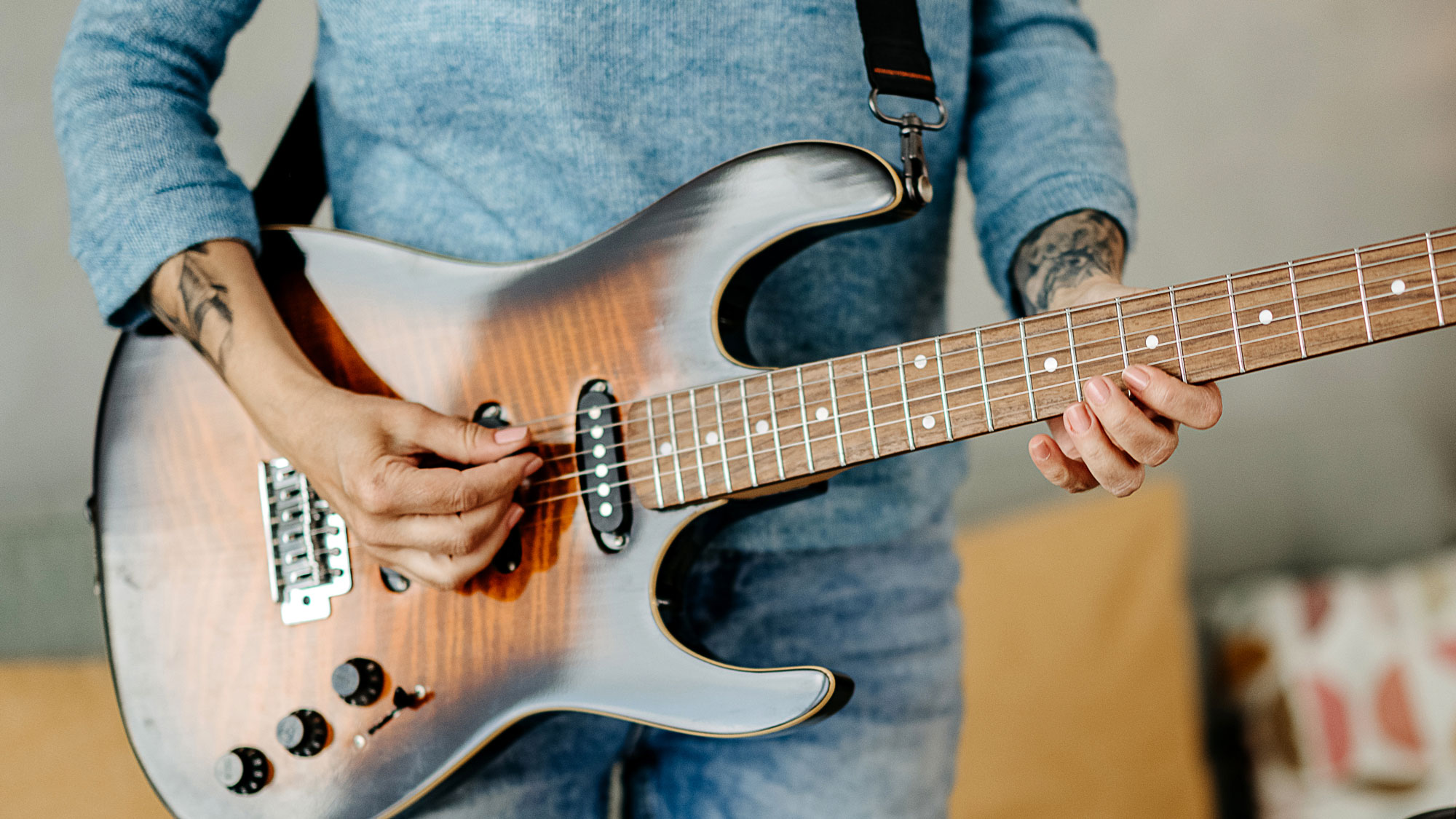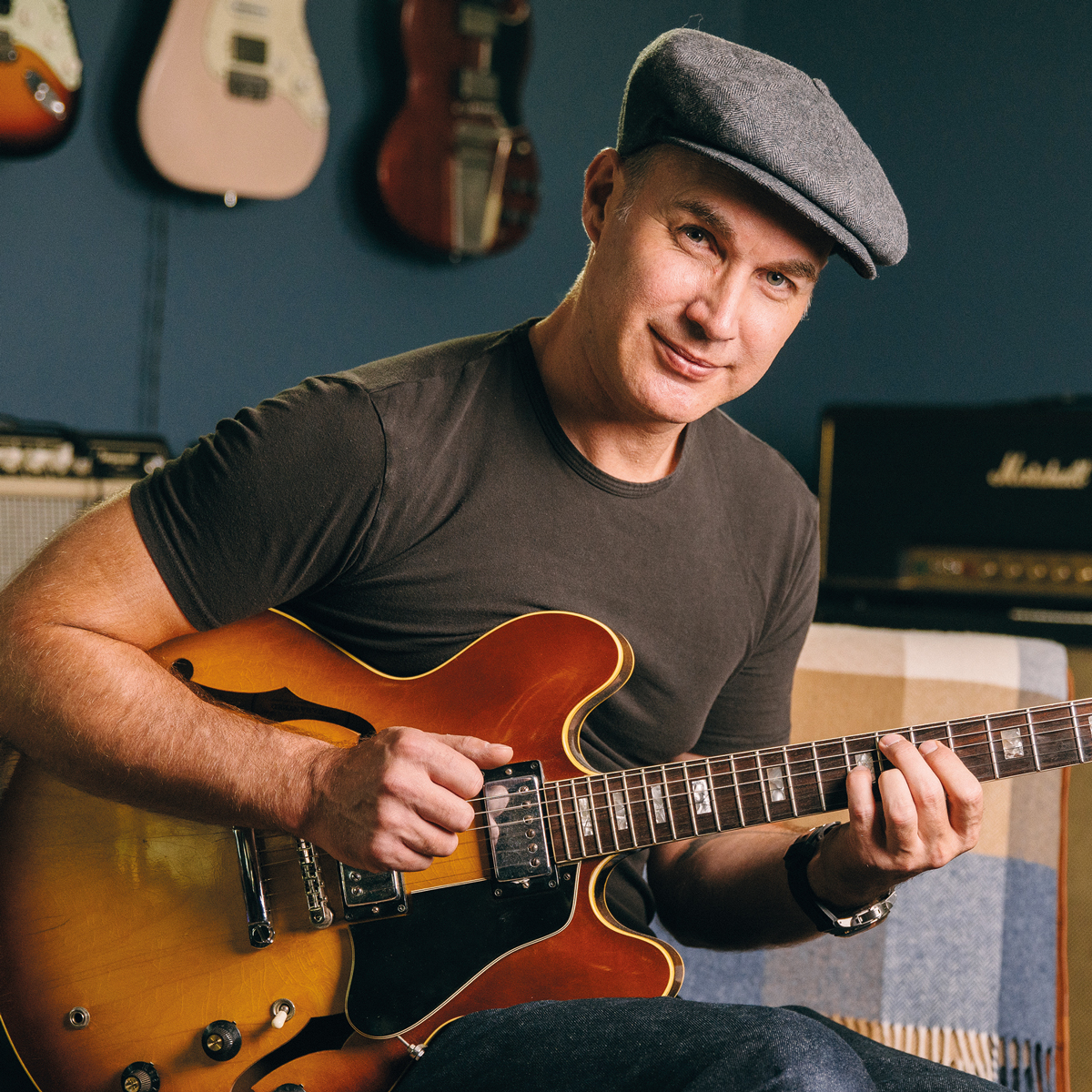“When we learn to improvise, the first thing we pay attention to is where to put our fingers… rarely do any of us pay attention to the rhythm of a melody or lick”: Can’t figure out why your improvised solos don’t feel right? Here’s how to fix them
It's not uncommon for competent players to become unmoored from rhythmic reality when vamping in a solo, but it's crucial to keep the beat at all times, and there are some practical ways you can do that

Lately I've spent a lot of time reviewing the performances of students as part of my Blues Immersion course. I've found that many guitarists can’t figure out why their improvised solos don’t feel right. And the answer is that they are not staying aware of rhythm when they're soloing.
Quite competent guitarists that are confident with rhythm guitar, somehow lose the rhythmic connection when it’s time to improvise a solo. Let’s discuss the issue first, and then we can explore a few solutions.
When we learn other people’s solos the rhythm of the solo is likely to be absorbed because the original player will have played in tempo, and we learn the notes and rhythm at the same time.
I saw a chap recently in a pub band suffer from this; he nailed the solo from Sultans Of Swing, but in the improvised solo in the next song there was no regard to the rhythm of what he was playing.
When we learn to improvise, the first thing we pay attention to is where to put our fingers. We learn scales and some licks too. We have to, or we wouldn’t know what we are to play.
So we learn our lick or phrase and we focus on the fingering, slides and embellishments, bends if there are any, while more advanced players might start thinking about what's going on harmonically. But rarely do any of us pay attention, specifically, to the rhythm of a melody or lick.
There are times when a solo can float across the groove, but mostly they should be played within the metre of the piece, so the listener feels the rhythm in your playing. I’ve met students that don’t seem to believe me – if you need proof, check out a sheet music book with transcriptions of solos.
Get The Pick Newsletter
All the latest guitar news, interviews, lessons, reviews, deals and more, direct to your inbox!
Most of the time you will see a consistent and easily notated rhythm. There are exceptions, like Frank Zappa, or crazy-fast rock guitar where the soloist is literally playing as fast as possible without regarding the time. But the majority of those highly technical guitarists are extremely aware of the rhythmic subdivisions and execute the passages perfectly.
A great way to test yourself for this is to record a solo of your own over a 12-bar blues sequence, without a backing track. When you listen back you should be able to hear and feel the beat without any backing. The vast majority of your notes should be falling exactly on a beat or a subdivision, not some random point in time.
The listener (yourself!) should be able to tap along and feel the whole 12-bar groove as you play. Try it. I suspect you’ll find it trickier than you think to stay locked into a specific rhythm. If this is you, I can suggest some things to work on that might help.
When you play a set of new licks I would encourage you to learn and practise a rhythm to go with it. When I teach licks I will always count along, but it would seem that many students don’t notice how important this is; they put loads of work in on the notes, but without playing it in time.
So start with a handful of licks and play them along with a metronome, slowly. Make sure that you are aware of the notes in each lick that fall on a beat (or subdivision if it’s a more complex idea). Repeat the licks over and over with your specific rhythm, and lock them together.
Now change the tempo a bit and make sure it’s still locked in to the beats. Explore recording yourself again and listen back. Do you feel the beat better as a listener? You should, and you should also feel better and more confident with the rhythm as you play it.
Next I’d suggest you try 'bar breaks'. This feature is built into the JustinGuitar Time Trainer app, or you could use any DAW, like GarageBand. Program a metronome click one bar long, and then copy it over and over. Allow for a solid four bars at the beginning and then mute one bar. Leave another three bars solid and then mute the next bar, and so on for as long as you like.
Now record a whole solo using the licks that you’ve been so diligently working on, and your challenge is to stay in time in the sections where the metronome stops. Most people find it pretty tricky, especially if they’ve not done it before.
If you’re not sure if you were in time, you can unmute the silent bars and you should then be able to tell where you were going wrong. Most folks seem to start rushing or speeding up when the metronome stops, so they are early when the beat comes back. It’s a super exercise for working on the timing of your soloing and phrasing.
Okay, if you find that easy you could switch to a one-bar click and a two-bar break. But that’s hard, unless you play simply. You’re likely to find that the more complex things you play, the harder it is to stay in time. It's a particularly powerful exercise, and can be most revealing.
Please take some time and examine the rhythm of your lead playing. It's really important and might be the solution to that thing that doesn’t feel quite right when you solo. Safe travels.
Justin Sandercoe – aka JustinGuitar – is one of the world's foremost guitar tutors. His learning platform, JustinGuitar, was founded in 2003, and its launch on YouTube in 2006 quickly made Justin's lessons some of the most popular on the web. Today, JustinGuitar has over 1.5m subscribers on YouTube, and the website is home to over 1,300 free video guitar lessons. Tommy Emmanuel, Mark Knopfler, Steve Vai and Brian May are among the A-list names who recommend Justin's guitar courses.
"Upgrading from your entry-level acoustic opens the door to an entirely new world of tonewoods, body shapes, and brands": 6 signs it's time to upgrade from your first acoustic guitar
"I'm past my prime": 5 common excuses for not learning the guitar – and 5 body and mind-boosting reasons you should







![[from left] George Harrison with his Gretsch Country Gentleman, Norman Harris of Norman's Rare Guitars holds a gold-top Les Paul, John Fogerty with his legendary 1969 Rickenbacker](https://cdn.mos.cms.futurecdn.net/TuH3nuhn9etqjdn5sy4ntW.jpg)







